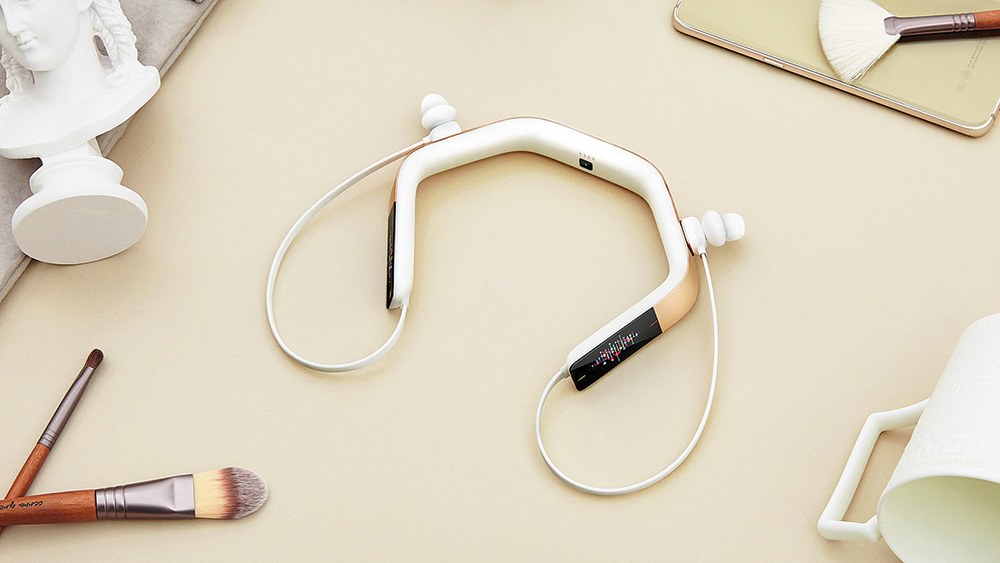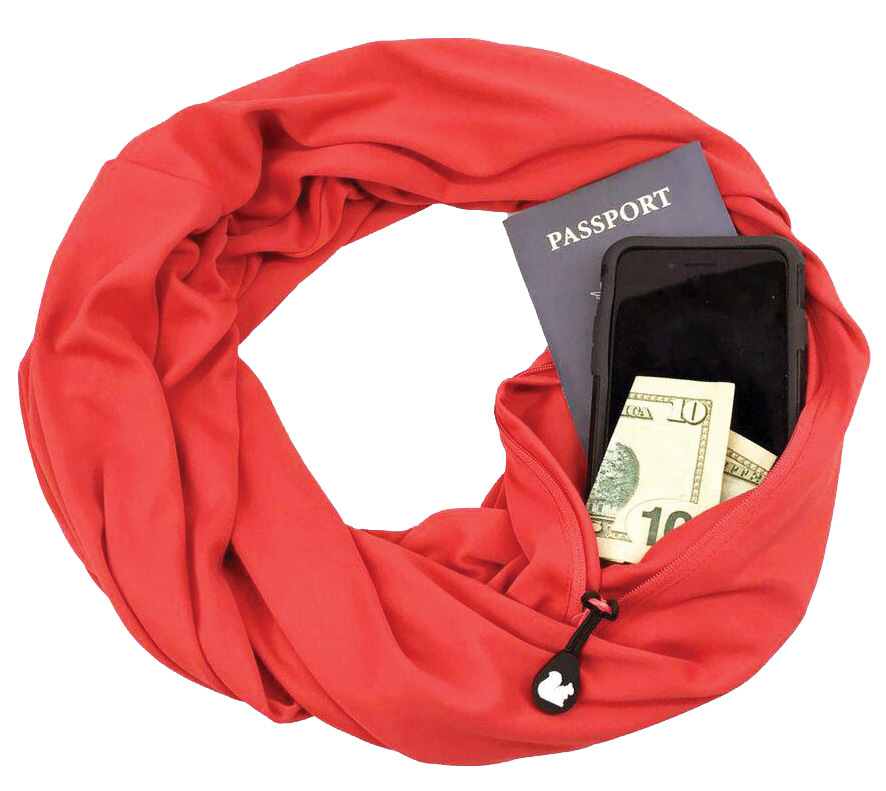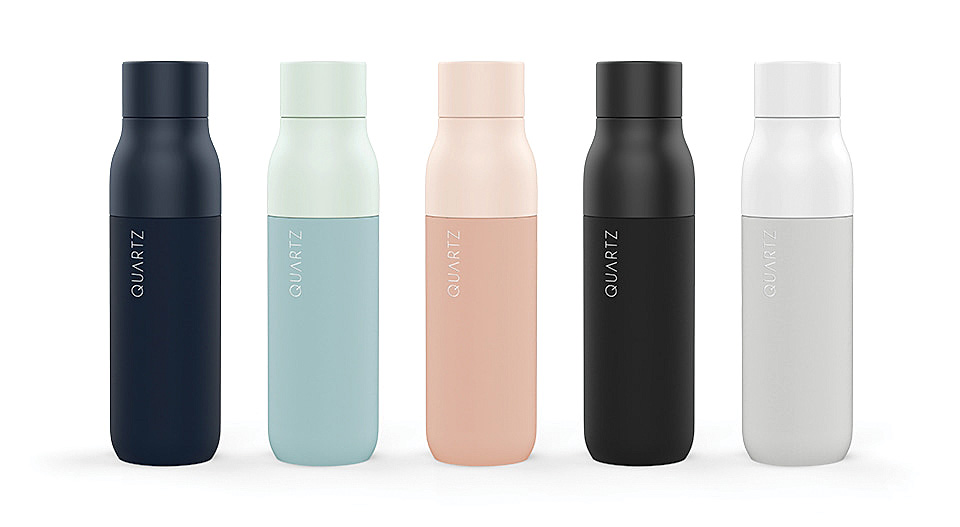Awards February 26, 2018
The Next Big Thing In Promo
After the fidget spinner took the promo industry on a whirlwind last year, which product will be the hot commodity of 2018?
Even Nostradamus couldn’t have predicted the incredible popularity of the fidget spinner in 2017. Despite the original design being around for years, the mesmerizing spinning widget captured the imagination of children and the wallets of their parents throughout the past year. The amount of online sales generated by fidget spinners last April was 55 times greater than the product’s total sales in January, according to data management and analysis firm 1010data. Between January and February of 2017, the search volume for “fidget spinner” across major retailers like Amazon.com and Walmart.com quadrupled. By the end of April, “fidget spinner” had more than 25 million searches.
>>A Second Chance -- The Woopen
Suppliers scrambled to restock their inventory, and distributors swarmed them for the latest offerings as the stress reliever toy quickly transitioned from the retail space to the promotional market. Starting in February of 2017, there were 226 ESP keyword searches for “fidget cube,” a desk toy consisting of buttons, dials and switches that was the result of a hugely successful Kickstarter campaign that raised $6.4 million. Searches increased 762% to 2,153 in March, and jumped up 337% to 9,411 in April.
Then last May, “fidget spinner” claimed the top search spot in ESP – surpassing stalwarts like pens, shirts and bags. In June, “fidget spinner” only fell one spot to number two. Since then, the product’s historic popularity has cooled off, but it’ll still be remembered as the promo item of the year in 2017.
So how about 2018? Which product will become the next big thing? Here, we search for winning ideas and present trendy items that have the potential for a fidget spinner-type run.
Kickstarter Clues
Kickstarter is a good place to start looking, as the popular global crowdfunding platform offers a smorgasbord of creative projects on the horizon. When searching for promo-appropriate, fully-funded campaigns, the Vinci 2.0 certainly stands out. Produced by New York-based Inspero Inc., the Vinci 2.0 is a standalone, smart, wireless pair of headphones. It’s a computing device with a Quad-Core ARM Cortex A-7 processor and Wi-Fi, 3G cellular and Bluetooth connectivity. Basically, it allows you to make calls, listen to music, track your fitness or perform any other task you’d normally do on your phone. But it’s totally hands free – you simply ask Vinci to do the task, like you would with Apple’s Siri or Amazon’s Alexa.
 Vinci 2.0 headphones don’t require a phone connection to play music.
Vinci 2.0 headphones don’t require a phone connection to play music.
“Our goal and mission is to reinvent the headphone space,” says Cathy J. Cao, U.S. business director at Inspero. “There’s been a lot of change to the hardware design, but what really hasn’t been done is innovation in the actual headphone space and industry. How do we make the music listening experience much better and easier for the user?”
Targeting the fitness market, Inspero’s team observed how people ran while wearing headphones. They’d either lose Bluetooth connection, have to untangle their wires or constantly look at their phone to switch songs. Vinci 2.0 prevents all that with completely standalone functionality, and being light enough to wear all day long or during cardio. With a final retail price of $149, Vinci 2.0 is scheduled to be released in early summer.
Backers overwhelmingly supported the product – the campaign earned $885,608 for a $20,000 goal. “They want transparency, they want to know the product they’re backing,” Cao says. “Our backers are very engaged and they’re willing to give you good feedback. Kickstarter was more for marketing and a great community-building platform.”
In terms of the promotional products industry, technology remains a hot sector as distributors constantly search for the latest innovative gadgets to wow customers. Before you balk at the price, consider that the Vinci 2.0 has already impressed one big-time end-buyer: “Google actually reached out to us last year and were very interested in the product for their employees,” Cao says. “They were looking specifically for headphones and they wanted to put the Google logo on them. We were surprised by their reaction, but we did demo the products for them.”
The U.S. consumer tech industry will reach a record high $351 billion this year, according to the Consumer Technology Association (CTA). Among the major categories expected to see growth are wearable tech, smart speakers like the Amazon Echo, virtual reality, drones and smart home products. Nicole Leinbach Reyhle, founder of Retail Minded magazine, predicts that voice-activated products will see a surge in popularity, especially among children. At CES, the global trade show hosted by the CTA, Reyhle witnessed android and app-enabled toys like Nerf guns connected to iPhones for a digitally interactive playing experience.
“We’re seeing more real-time engagement that kids are responding to,” Reyhle says. “We’ll see more innovation with classic toys and games – like Legos becoming robotic – just a digital layering to what has already worked in the past.”
Wearables and Sustainability
When some of the promo industry’s most prominent and innovative suppliers are looking for the coolest new items for their lines, their first stop is often the Hong Kong-based manufacturer Headwind, helmed by general manager and hip trend-spotter Michael Hung.
“As far as products that have potential, I think some of the wearables and Bluetooth-enabled devices that marry traditional promo products with innovative technology and apps are quite interesting,” Hung says. “For example, Bluetooth-enabled water bottles that remind you to stay hydrated. Costs are largely prohibitive right now, but as they fall, I think the promo world will adapt quickly.”
 The SHOLDIT Infinity Scarf can hold a phone, keys or wallet.
The SHOLDIT Infinity Scarf can hold a phone, keys or wallet.
Wearables and functional apparel were also popular categories at CES, from smart watchstraps and wristbands to sock and thumbnail sensors. However, no product caught Reyhle’s eye quite like the SHOLDIT Infinity Scarf, which has a built-in pocket for holding your phone, keys or wallet. Its stylish appearance and convenient functionality has attracted attention from O, The Oprah Magazine, The View, Good Morning America and other mainstream outlets. It’s now being offered in the promo market as well, available from RuMe Brandsuite (asi/82700) for about $25 apiece.
“We always have our phones with us, but we want to be a hands-free society at all times,” Reyhle says. “Apparel is becoming more functional and purposeful while incorporating warmth and style.”
Going green is another apparel trend to keep an eye on. Nielsen data shows that two-thirds of global consumers said they were willing to pay more for sustainable brands – up 55% from prior stats. Another study from 2015 reported that 84% of consumers globally seek out responsible products whenever possible. The same desire is on display in the promotional products industry: Nearly 65% of end-buyers surveyed by ASI say they prefer to purchase promos that are environmentally friendly.
Recreator Hemp Apparel aims to blend the eco-friendly trend with the recreational marijuana movement, as legal restrictions have lessened across the country over the past few years. With industry sales projected to top $20.2 billion by 2021, the time is ripe for businesses such as Recreator to target the legal cannabis industry. Starting as a successful Kickstarter campaign in 2012, the Los Angeles-based manufacturer recently signed the first contract for U.S.-grown hemp fiber (from Nebraska-based BastCore LLC) to be supplied for sustainable apparel.
“In terms of promotional products, I would say that the sustainable T-shirt is the next big thing,” says Matt McClain, founder and CEO of Recreator. “We are way past the days of green-washing, and brand aficionados want to know where their product is made, how it’s made and what it’s made of.”
In the cannabis industry, McClain insists, “it doesn’t get any more authentic than printing the logo of your cannabis brand on cannabis textiles. We think Recreator is right in stride with these trends toward transparency, local and responsible sourcing, as well as bio-economic or triple-bottom-line take on American capitalism.”
Sustainability was also the focus of another successful promo-appropriate Kickstarter campaign: the QUARTZ Bottle, a reusable, rechargeable, insulated water bottle that cleans itself and the water inside. The QUARTZ Bottle utilizes proprietary UV-C LED technology that emits the optimal wavelength of light to eradicate bacteria and viruses. More than 12,000 backers pledged over $1.3 million to bring the project to life, far exceeding the manufacturer’s $30,000 goal.
“We all want to drink more water and use less plastic, but existing reusable bottles don’t always make it easy and the results for our health and the environment are appalling,” says QUARTZ co-founder Justin Wang. “We designed the QUARTZ Bottle to address major pain points of the consumer head on. The bottle delivers pure water from a self-cleaning bottle all while looking brilliant, so there will be no need to reach for a one-use plastic bottle.”
 The QUARTZ Bottle cleans itself and the water inside.
The QUARTZ Bottle cleans itself and the water inside.
Representing 8.1% of promotional product market sales, drinkware remains one of the leading categories in the industry. At an anticipated retail price of $99, the QUARTZ Bottle may serve as a great premium gift for clients. A less expensive, environmentally friendly drinkware product is the Rumble Jar – an easy, DIY cold brewing system. The equipment includes a lid, cap, filter and Mason jar.
First, you pour coffee grounds into the stainless-steel filter and secure the silicone cap. Second, you put the filter into the jar, fill the jar with water and tighten the lid. Then you shake the jar twice so you hear the water rumbling. Finally, you pull the filter out, dump the grounds and give it a quick rinse. The concept has enticed more than 1,200 backers to pledge over $53,000, well ahead of the company’s $10,000 goal.
The Draw of Social Causes
Whether you have faux suede totes that look like designer bags or Moleskine leather journals, it’s all about looking expensive and valuable, according to consumer and marketing trend expert Kelly McDonald. One of the most popular ways to increase your product’s value, McDonald says, is through creative packaging.
“Customized packaging is viewed in promotional products in ways we haven’t seen before,” McDonald says. “Packaging that’s worth keeping. Research shows that a big part of the ‘experience’ of a gift is actually opening the package itself.”
However, valuable packaging doesn’t always equate to expensive. Case in point: The Pin Project, a Toronto-based Kickstarter campaign that raised over $106,000 for a $38,000 goal. Launched by a coalition of like-minded social enterprises such as Far + Wide Collective, ISHKAR, Global Goods Partners and Turquoise Mountain, the project gives refugees in Afghanistan, Jordan and Turkey the tools and training to achieve long-term self-reliance. They craft sterling silver or brass pins shaped as a kite, originally designed by world-renowned artist Jenny Bird as a symbol of hope. When you order the pin, it comes in a card signed by the refugee who made it.
“People feel the refugee crisis is too big an issue for them to get involved in,” says Hedvig Alexander, founder of the Far + Wide Collective. “So we’ve created a way for anyone and everyone to play a part and make a difference.”
 Existing jewelers in Afghanistan, Jordan and Turkey hold training workshops for refugees.
Existing jewelers in Afghanistan, Jordan and Turkey hold training workshops for refugees.
 The Pin Project combines style with support for social causes.
The Pin Project combines style with support for social causes.
According to the UN Refugee Agency, one in three viable jobs for refugees is in craft production. The skills that crafts training provide are suitable for all genders, easily transferable from generation to generation and have been found to give higher levels of job satisfaction than other jobs available to displaced people. Alexander says that existing jewelers have been willing to scale their workshops to train as many refugees as possible.
“These are products that symbolize something you care about, and create employment and make connections in these economies,” Alexander says. “Wouldn’t it be great if this comes to be a symbol with the same magnitude as pink is for breast cancer? We’re trying to create as many partnerships as possible so we can grow. We know this can become big if the right people get involved and help us scale it.”
Pins are a staple of the promo industry, as evidenced by the assortment on display at the ASI Shows in Orlando and Dallas earlier this year. Of course, distributors also sought out new, innovative products and fresh branding solutions. Digitally imprinted pens was one category that showed vast improvement, according to attendees.
What does this digital expansion mean? More colors, more personalization, and more opportunities to find the product that everyone will be talking about next.
